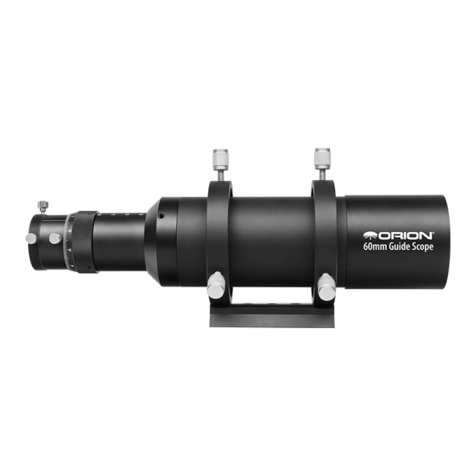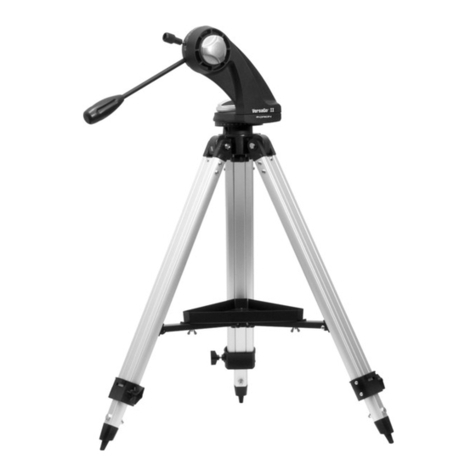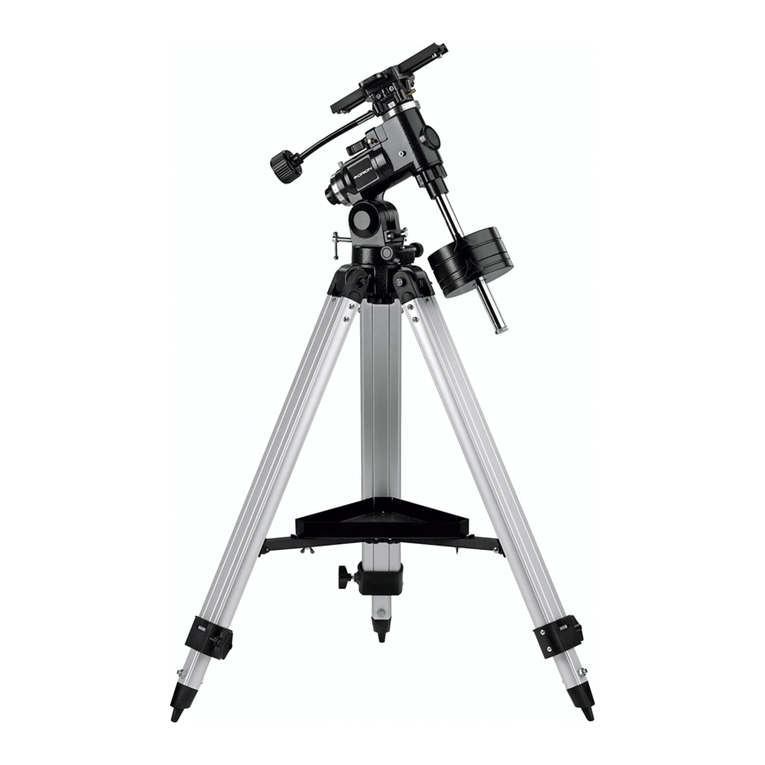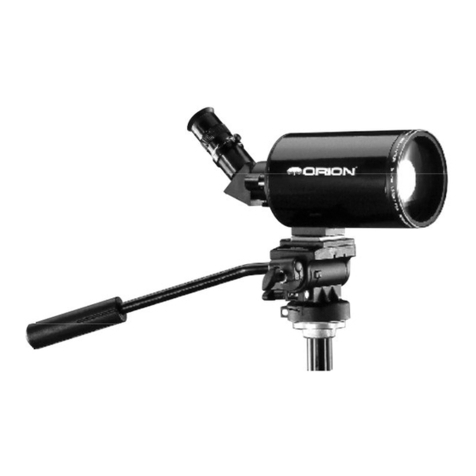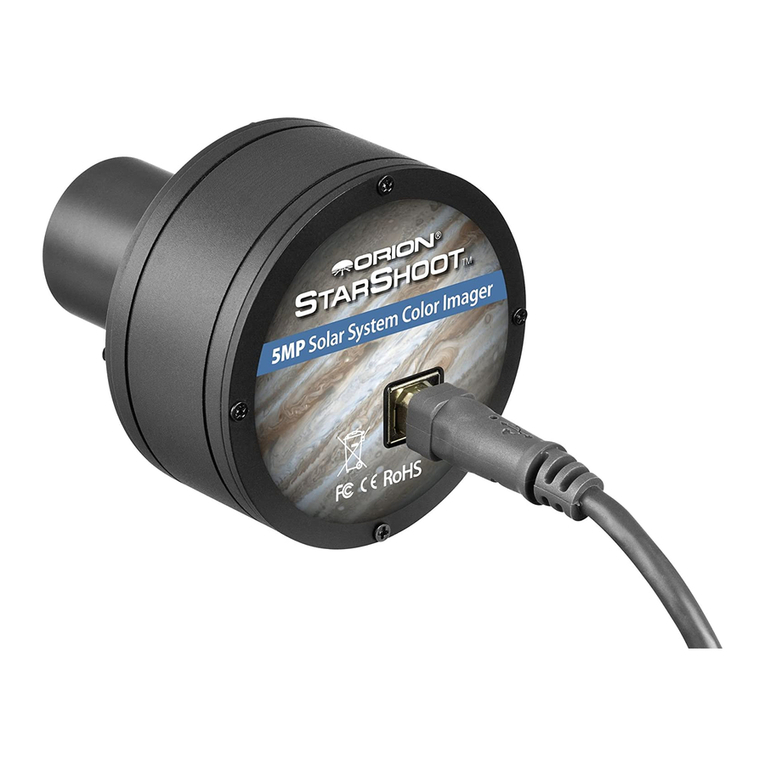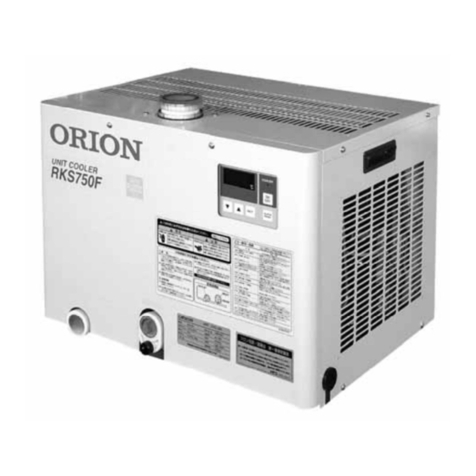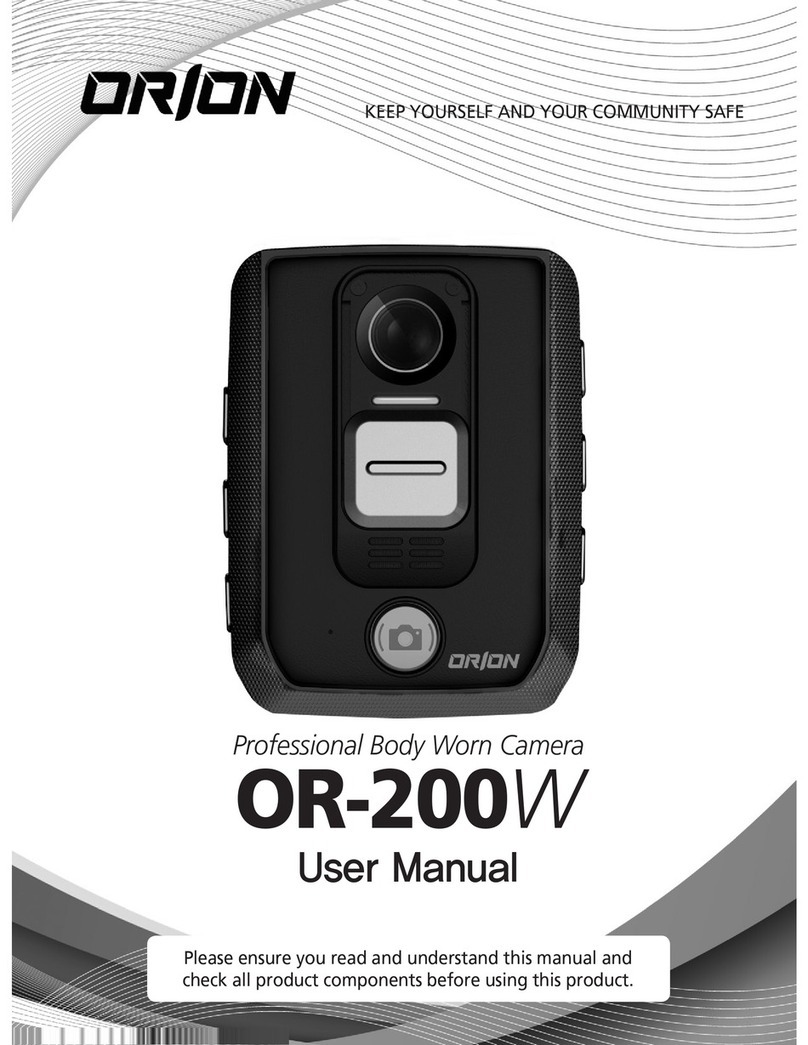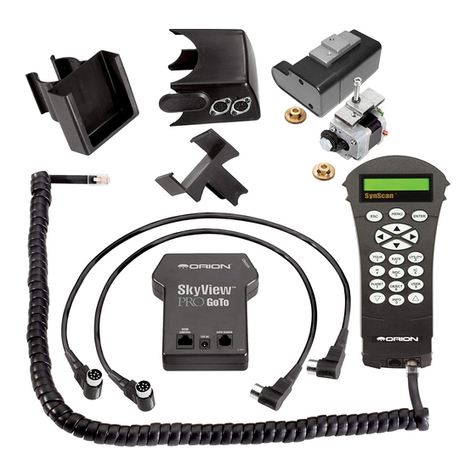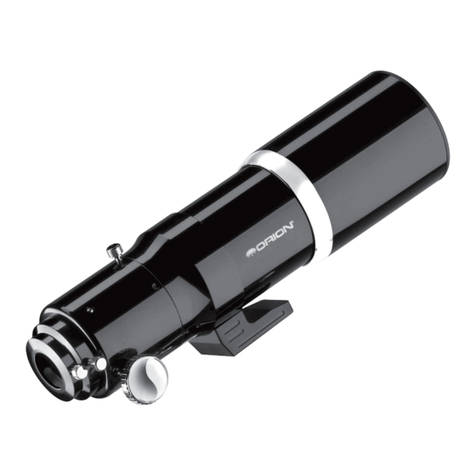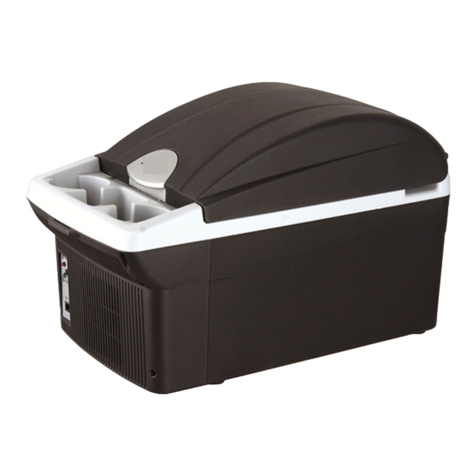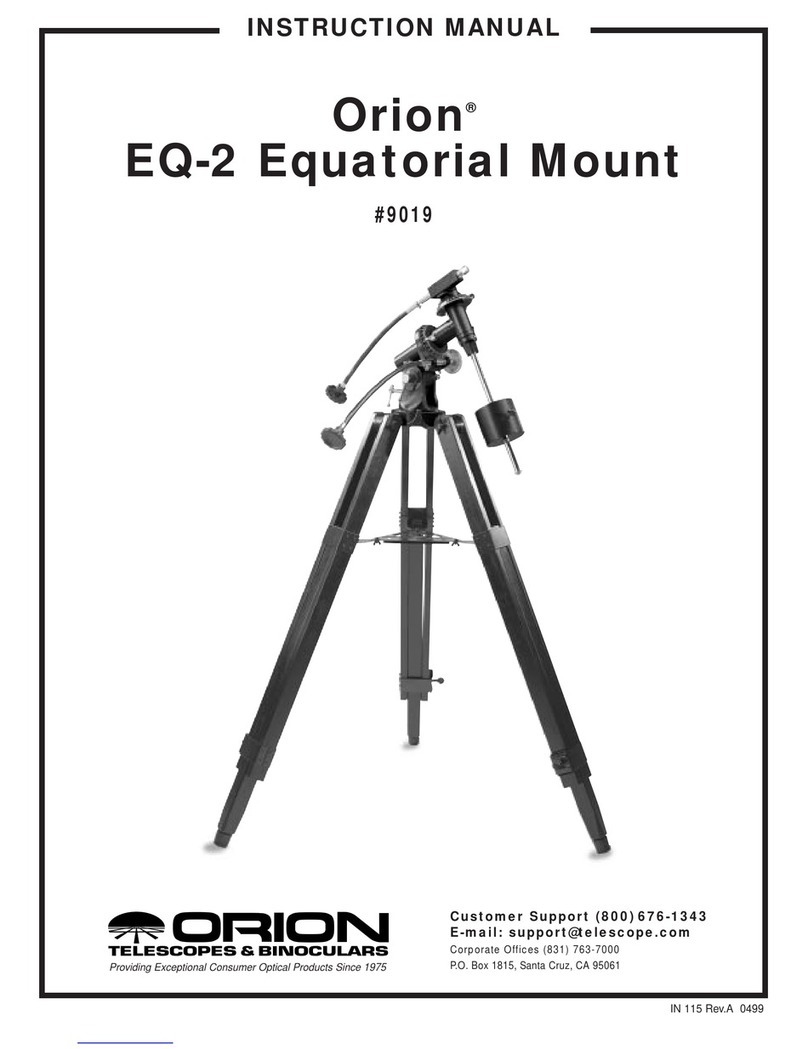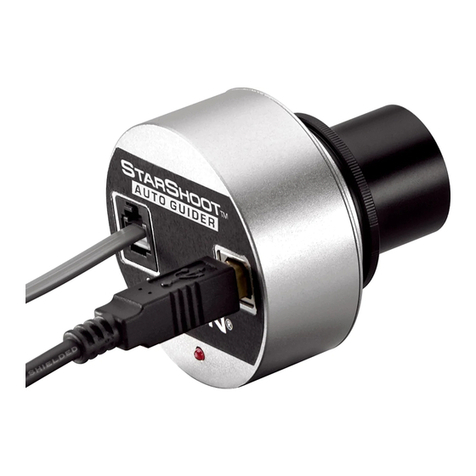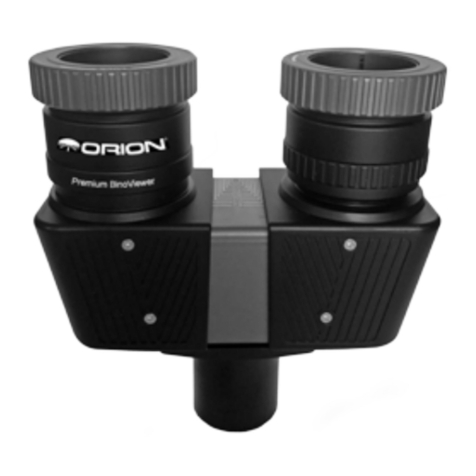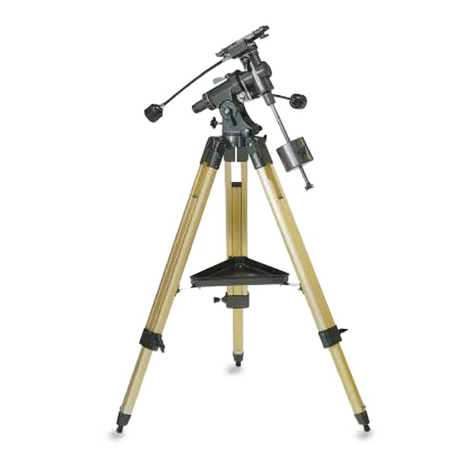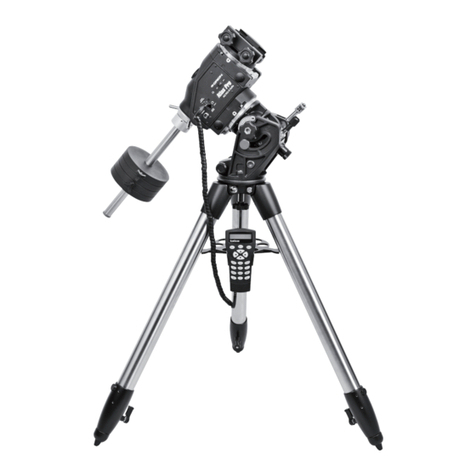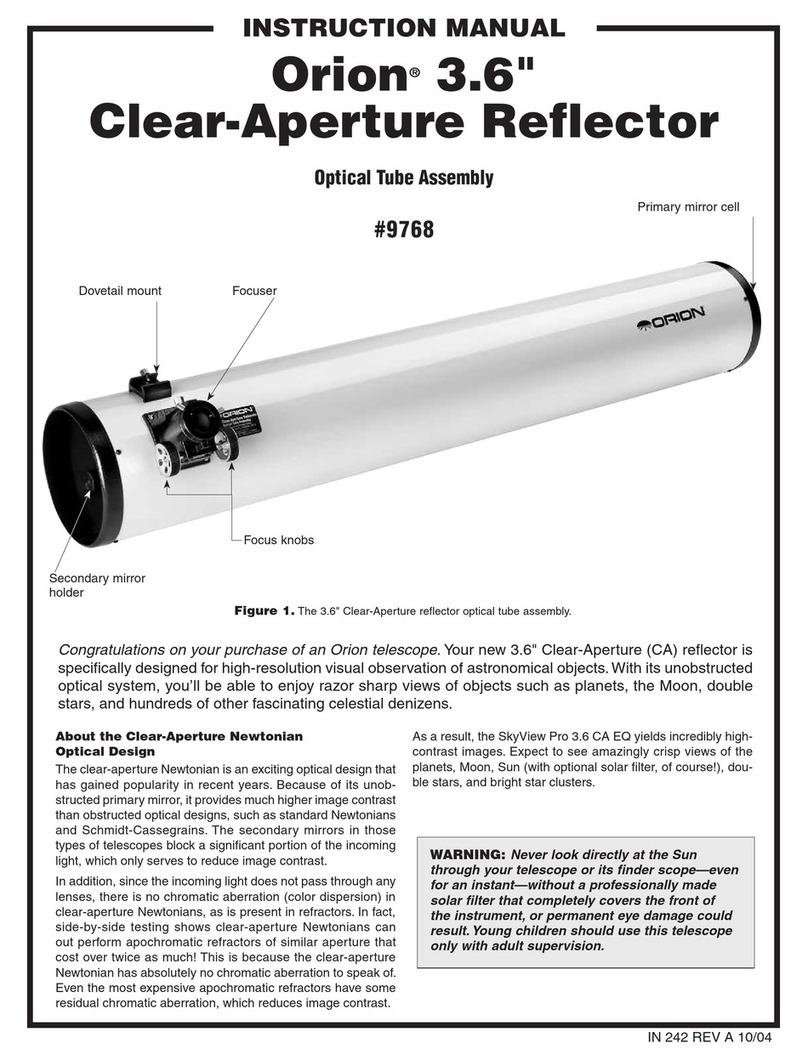
7
3. Press the “FAST” speed button then the “UP” or “DOWN”
directional buttons to roughly level the telescope.
4. There is a latitude scale near the top of the TeleTrack fork
arm with a value range from 0° to 90°. One of the three
latitude indicator arrows should be pointing close to the “0”
mark on the latitude scale (see Figure 8). If not, remove
the L-bracket or dovetail plate from the mount, and use
the “UP” or “DOWN” buttons to rotate the mount 180° in
altitude, then reattach the telescope. (When reattaching
the telescope, keep in mind that the objective lens of the
telescope should be on the side of the mount without the
latitude scale, see Figure 6).
5. Now that the indicator arrow is close to the 0 on the lati-
tude scale, press the “SLOW” speed button and slew the
mount slightly using the “UP” and “DOWN” buttons until
the latitude indicator arrow is precisely lined up with the 0
mark on the latitude scale.
Note: To reduce the chances of motor backlash error, make
your final directional adjustment here with the “UP” directional
button.
6. Turn off the TeleTrack mount, wait a few seconds, then
turn the mount back on.
7. Use the speed buttons and “UP” and “DOWN” directional
buttons on the hand controller to move the telescope until
the latitude indicator arrow is lined up with the value on the
latitude scale corresponding to the latitude of your observ-
ing location. For example, if you are at 37° North latitude,
slew the mount so the indicator arrow lines up with the 37
mark on the latitude scale.
Note: To reduce the chances of motor backlash error, make
your final directional adjustment here with the “UP” directional
button.
8. Finally, press the “FAST” and “SLOW” buttons simultane-
ously to store your latitude into the TeleTrack system.
Now you are ready to observe celestial objects and track their
apparent migration across the night sky. The TeleTrack will
remember your latitude setting even after it is powered off.
Note: For Southern Hemisphere operation, the procedure to
set your latitude is similar to the above, but with the 0 mark
and latitude value reversed. First slew the mount so the indi-
cator arrow points to the value of your latitude on the scale,
then power off the mount. Now, power on the mount and
slew it until the indicator arrow lines up with the 0 mark on
the latitude scale, then press the “FAST” and “SLOW” buttons
simultaneously.
Initial Positioning
Now that the TrueTrack knows the latitude of your observing
site, you are ready to use it for astronomical observation. But
first, the mount must be set so it is powered on in its initial
“home” position.
1. Power the mount on, and slew the mount using the “UP”
and “DOWN” buttons so the telescope is roughly level.
One of the two latitude indicator arrows should be close to
the 0 mark of the latitude scale.
2. Use the “UP” and “DOWN” buttons to precisely level the
telescope. Use a carpenter’s level along the telescope’s
tube for best precision.
Note: To reduce the chances of motor backlash error, make
your final directional adjustments here with the “UP” direc-
tional button.
3. Now, use the “LEFT” and “RIGHT” buttons to slew the tele-
scope so that it is pointing North. Use Polaris (the North
Star) as a reference, if possible. If Polaris is not visible
from your observing site, then consult a compass.
Note: To reduce the chances of motor backlash error, make
your final directional adjustments here with the “RIGHT” direc-
tional button.
4. Power the TeleTrack mount off.
The TeleTrack is now in its home position. For astronomical
tracking to function properly, the mount must be powered on
in its home position.
Finding and Tracking a Celestial Object
Once your TeleTrack mount has been aligned for astronomical
tracking, you can pick a celestial object to observe and track.
1. Power the TeleTrack mount on. Make sure it is in its home
position before doing this.
2. Choose a celestial object from a star map, planetarium
software, or planisphere. Note the constellation in which
the object resides. Set your TeleTrack mount slew speed to
“FAST” and slew your telescope in the general direction of
the constellation.
3. Once you are close to the target, set your slew speed to
“SLOW” or “GUIDE” and carefully adjust the position of
your telescope while looking through the telescope’s find-
er scope until the target object is centered in the finder
scope’s field of view.
4. If your finder scope is properly aligned with your tele-
scope, you should now be able to magnify the object by
inserting a wide-field eyepiece (25mm or greater) into
Figure 8. Setting the Latitude
Indicator Arrow
Latitude Scale
